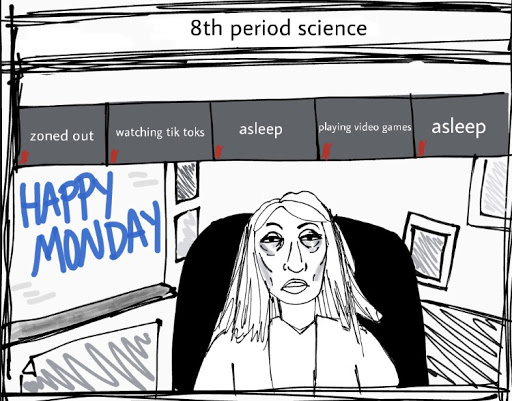Editorial: Asynchronous Mondays are ideal for remote and hybrid learning
January 28, 2021
During this pandemic, District 203 has been working hard to determine the best way to provide students with the highest quality education possible as they learn remotely. This process has required creativity and innovation on the district’s part in creating their “Return to Learn” plan, which details the use of remote school days and plans to one day transition back to in-person schooling. All parties involved, from staff to students to parents, have had to be flexible in adjusting to new schedules and methods of learning.
However, the district administration’s decision to replace asynchronous scheduling with a synchronous half day schedule on Mondays is not in the best interest of students, especially at the high school level.
Naperville Central began the second stage of the district’s plan on Oct. 19, which introduced weekly asynchronous Mondays and a new block schedule Tuesday through Friday. On Mondays, students filled out a Google form by 12 p.m. to verify their attendance and were given online assignments to work on independently throughout the day without attending any zooms. For the remainder of the week, school ran from 7:35 a.m. to 3:00 p.m. with four zoom classes and asynchronous time to meet with teachers each day.
Central Times believes that the asynchronous days have been largely beneficial to students in the remote setting, allowing us to ease back into school after weekends. Since many homework deadlines have shifted from Sunday to Monday, students have one additional day to complete their assignments. This is especially helpful for those who have busy weekends due to sports, work or other commitments. Also, the more fluid schedule allows students that stay up late catching up on schoolwork to get more sleep. Teachers also have time to catch up on grading and lesson planning.
Additionally, having a day without formal classes gives students the opportunity to contact and meet with teachers who have at least two hours designated for meeting with students who need or want individual attention via a one-on-one Zoom.
Also of note: Mondays reduce the amount of time we are required to spend on Zoom calls, which is helpful to many who have been experiencing “Zoom fatigue,” which should still be minimized even as students return to in person learning, to keep us focused when we are in class.
We recognize that this new schedule, even for our remote setting, is not for everyone. For many students, Mondays have become a “blow-off” day. For those who struggle with being self-directed, the lack of structure on these days can be challenging, causing some to feel unmotivated and fall behind in classes. Several teachers, administrators and community members are also concerned that asynchronous Mondays are a waste of learning.
But weigh the two options currently being presented, and it’s obvious why the asynchronous option is preferable. The very reason high schools and junior highs moved to a block schedule was to decrease transition time that resulted from an eight or nine period day. With these new 30 minute synchronous periods on Mondays, very little time can actually be devoted to teaching, and even less for students to take breaks.
And, contrary to some people’s concerns, asynchronous Mondays aren’t completely devoid of academic work. Many teachers choose to assign formative assessments and practice during this time, which reinforces what students learned the week before and eases them back into the school week.
It is important to recognize that every student is a different learner, and that consequently, there will never be a perfect solution. Therefore, we can only aim to maximize benefit to students across the board to the best of our abilities, which requires the flexibility that asynchronous Mondays offer better than any other alternative.







